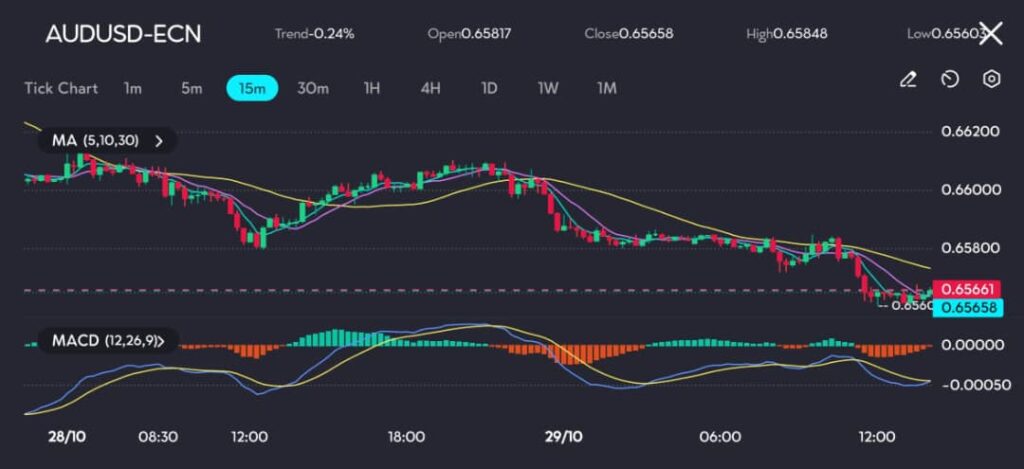Listen to the article here:
Key points:
- The Australian dollar reached 2.5-month lows amid U.S. Treasury yield strength.
- A potential rate cut by the Reserve Bank of Australia hinges on Wednesday’s inflation data outcome.
The Australian dollar weakened further on Tuesday, hitting lows not seen since mid-August, with a slip of 0.1% to $0.6578 in early trading.
This decline follows a 0.3% drop overnight as the AUD’s price structure faces mounting resistance, particularly around the 200-day moving average at $0.6628.

See: AUD/USD is trending downward, with bearish signals from moving averages and MACD on the VT Markets app.
With the U.S. dollar strengthening in tandem with elevated Treasury yields, traders are keeping a close eye on the upcoming quarterly Australian inflation data, which could directly influence whether a rate cut is on the table this year.
Kiwi Dollar Steady Despite U.S. Yield Pressure
Elsewhere, the New Zealand dollar has shown resilience, holding at $0.5977 after briefly touching a three-month low of $0.5958 overnight. Current support for the kiwi dollar sits near $0.5975.
However, the kiwi and Aussie dollars have both experienced downward pressure due to the strong U.S. yields and diverging monetary expectations between their central banks.
The Australian dollar, for instance, has seen a 4.8% decline this month—the largest drop since September 2022—partly influenced by rising U.S. yields ahead of the approaching U.S. presidential election.
Key Inflation Data to Shape Australia’s Rate Cut Outlook
Analysts expect Australia’s third-quarter consumer inflation data, due Wednesday, to play a defining role in rate cut possibilities.
Forecasts suggest headline inflation might ease to 2.9%, while core inflation, measured by the trimmed mean, is projected to rise by 0.7% for the quarter, reaching an annualised 3.5%.
If core inflation exceeds 0.7%, the Reserve Bank of Australia is likely to forgo any immediate rate cuts, potentially putting pressure on AUD bears.
Current swap rates indicate only a 34% chance of a rate cut by December, with April 2024 being the most likely period for the first easing if inflation allows it.
AUD/NZD Faces Resistance Amid Diverging Rate Expectations
On the AUD/NZD front, the cross has struggled to advance past NZ$1.1090, with recent trading near the lower bounds at NZ$1.0993.
Market participants continue to speculate that diverging interest rate expectations between Australia and New Zealand may push the Aussie higher in the cross, especially as New Zealand’s inflation returns to its target range and strengthens rate-cut expectations for the Reserve Bank of New Zealand.
See also: Aussie and Kiwi Weaken as Dollar Gains
Australian bond markets showed some relief, with three-year government bond futures gaining 3 ticks to 96.07, rebounding from earlier three-month lows, and ten-year futures up by the same margin to 95.545, recovering from a six-month low of 95.485.
Bond market movements suggest investors are cautiously positioning for potential surprises in Wednesday’s inflation data.
Start trading now — click here to create your live VT Markets account.









